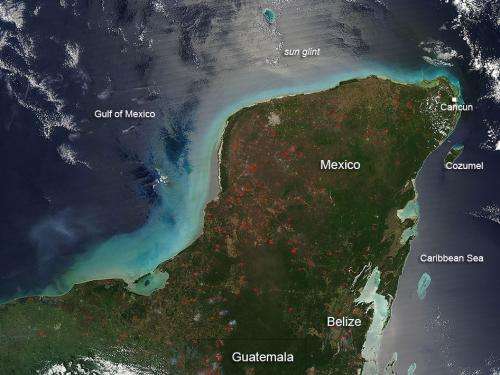Image: Fires in the Yucatan Peninsula

Dozens of red hot spots cluster at the tip of Mexico's Yucatan Peninsula. To the south, fires also speckle the neck of the Yucatan, Guatemala, and Belize. Each hot spot, which appears as a red mark, is an area where the thermal detectors on the MODIS instrument recognized temperatures higher than background. When accompanied by plumes of smoke, as in this image, such hot spots are diagnostic for fire.
April is in the middle of the dry season, which runs from January through May in this region. It is also fire season. Many of these fires may have been deliberately set to manage land for agriculture, especially in forest clearing, working cropland, and renewing pastures. Some also may be wildfires, with natural (lightning) or accidental sources. As the dry season progresses, the number of fires tend to grow, as does the pall of smoke which settles over the land.
Although haze and smoke cover the region and pours northward over the Gulf of Mexico, the shiny, silver-toned band aligned in a north-to-south direction is not smoke. It is sunglint – the mirror-like reflection of the Sun off the water surface.
Provided by NASA's Goddard Space Flight Center




















